Deborah bay had been on my list for a long time, due to the remains of a ship with an infamous past alleged to lie on its muddy shore. But when I happened to glance at the bay on the 1901 Dunedin map and see the words “Torpedo Depot”, the quiet West Harbour cove was quickly shuffled to the number one spot. Little did I know that this was barely scratching the surface of this little bay’s astonishing past.
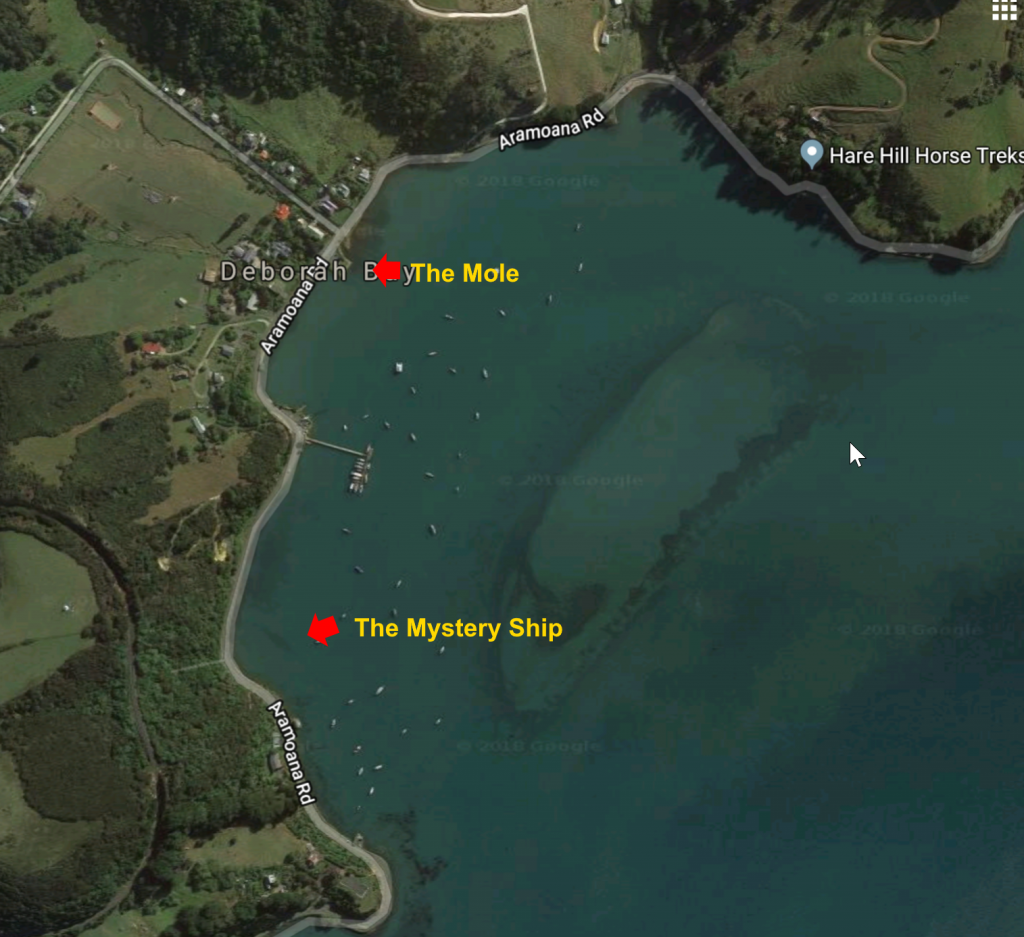
I gathered what scraps of free time I could spare and cruised up the harbour, picking up my friend KL on the way. The day was not the most promising, but we were determined to make the best of it.
We found it appropriate to park on the small tongue of reclaimed land extending into the bay (known as “the mole” or “the green”), seeing as it was part of the day’s historic adventure.
Disembarking into a misty film of rain, we were first attracted to a memorial plaque which apparently also did duty as a seagull perch. Scattering the feathered interlopers, we approached to discover that indeed this little patch of land did once serve as a mooring for torpedo boats.
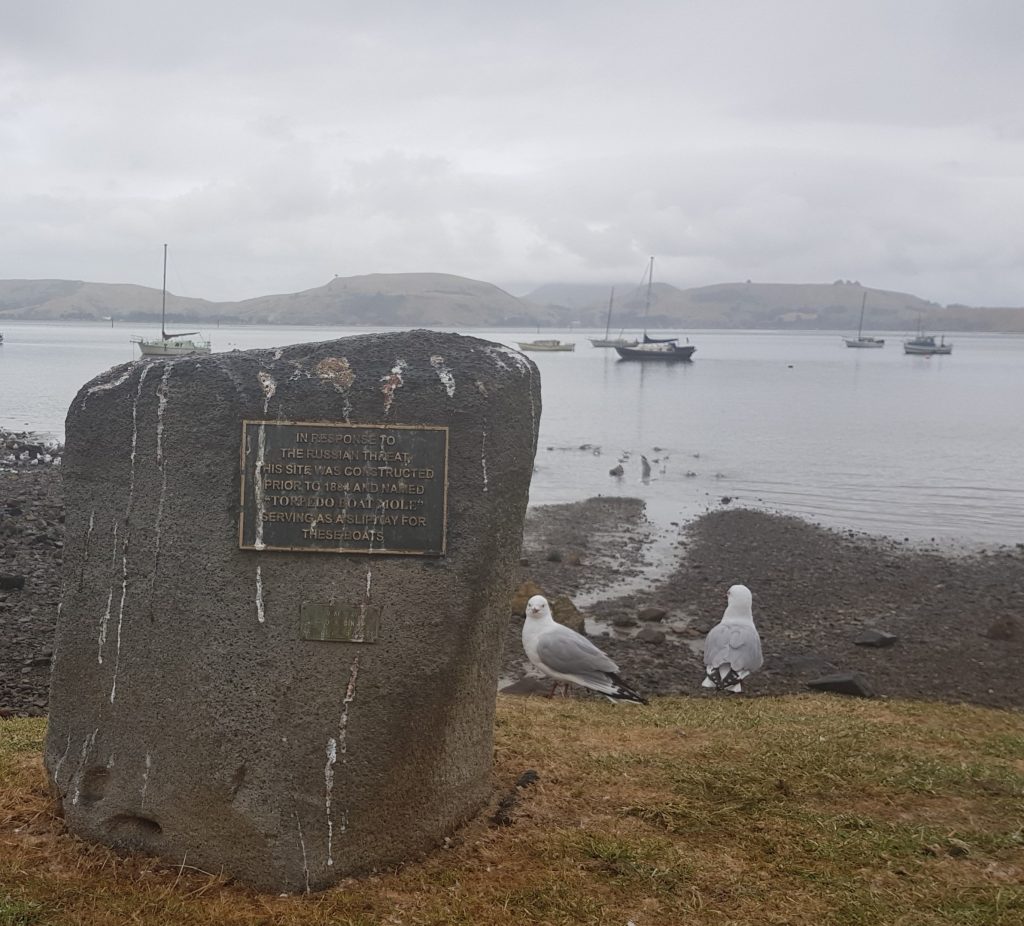
But let’s back up a bit – this happened during the Russian scare of the 1880s, which I covered in some depth when I investigated the Harington Point gun emplacements. Torpedoes in the familiar sense – the swift and deadly missiles we know today – hadn’t quite caught on yet. So what was going on here?
The four torpedo boats that the New Zealand Government ordered in 1882 were small fast vessels designed to counter the large and lumbering warships that we imagined would soon be invading our harbours. They were equipped with spar torpedoes – essentially a bomb on a long pole intended to be rammed into the hull of an enemy ship and detonated as the torpedo boat sped away.
Reminds me of Don Quixote charging at windmills, and that comparison becomes even more apt in light of the fact that the boats were “obsolete before even reaching New Zealand”.

Deborah Bay’s torpedo boat was the Taiaroa, and the other three were stationed at Lyttleton, Wellington and Auckland. The first skipper of the Deborah Bay Torpedo Boat Corps, as it was known, was John Densem, who had just been dismissed as captain of the Mountaineer in Lake Wakitipu after running it aground one dark night. You may recognise the name of that steamer, as John Densem’s replacement in charge of the Mountaineer, Captain Wing, is the one who once ferried our day-trippers to Lake Rere.
A crew of eight were stationed here, with a barracks above at the corner with Lewis St (previously known as The Tram due to the sawmill tram line which once ran down this way). The Torpedo Corps was disbanded in 1892, having never even glimpsed a Russian vessel, and the barracks still stands as a private residence, although the numerous store sheds have all been demolished save for one small remnant. Even the large one building which served as a church and community hall for many years was finally demolished in 1990.

Cold Water Creek, which runs alongside Lewis Rd, was also the site of an earlier industry, of which only a few telling clues remain. During the Otago gold rush of the 1860s as miners flocked to Dunedin, enterprising locals decided to go into a more reliable business – providing supplies of fresh water for the numerous ships now passing through (Dunedin’s water was considered too contaminated for the job).

It’s hard to make out now where the weir was built to retain the creek water, but the old steps leading down to the creek bed are still easy to find from the modern road bridge. In the bay, the remains of the piles for two jetties are still apparent, where a small fleet of water-carrying lighters would quickly respond whenever a nearby ship raised a bucket to the masthead in order to indicate their need for water.

Having seen the surviving remnants of both the Torpedo Depot and the water supply business, we decided to head south in search of our mystery ship.
Passing along the bottom of the retaining wall, we attracted the attention of Deborah Bay’s resident flock of geese. Perhaps these are another offshoot of the Port Chalmers Back Beach flock, and will hopefully be more lucky than the Watson Park splinter group, all 10 of which were controversially culled!

Moving on, we found many interesting artifacts on the stony shore. There were patterned shards of china plates, broken clay bottles, and what appeared to whole loads of rusty metal odds and ends that had been dumped over the retaining wall some time in the past.
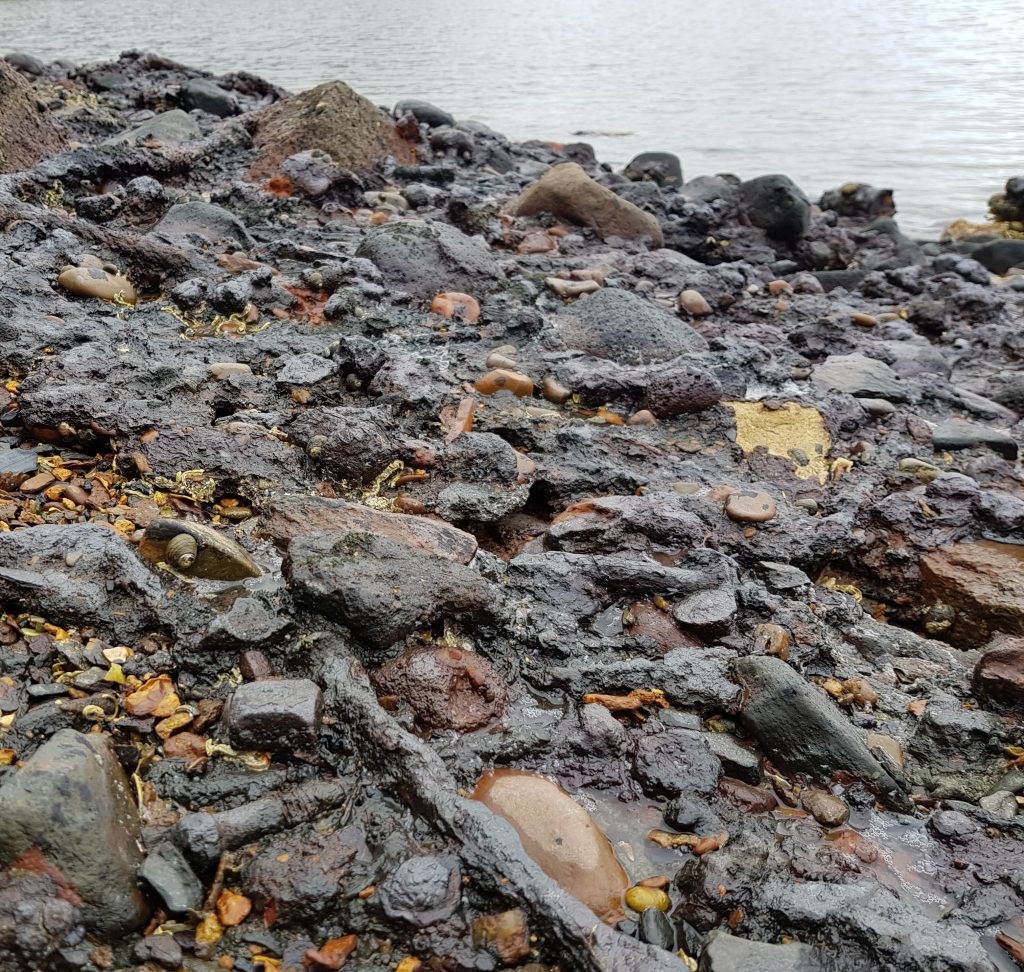
This place has been used as a dumping ground since at least 1905, for on New Years night a young man named Alfred Lewis was killed when the explosive powder he’d foraged from the bay ignited while he and a friend were fetching it for use in the festivities.
But where did the abandoned explosives on the shore come from? You might expect the Torpedo Corps, but you’d be wrong. In fact this was a tragic addendum to another industry at Deborah Bay, albeit an unsuccessful and short-lived one. In fact, this powder had killed once before.

“Taipo” explosive powder was a Kiwi invention, heralded as the next big thing in mining explosives – safe, stable, and free from toxic fumes. The Taipo Explosives Syndicate Limited was formed in 1902, and similar syndicates and sales of the rights to manufacture the powder appeared as far afield as Australia, the USA, England and South Africa.
The Syndicate originally considered leasing the now-unused buildings vacated by the Torpedo Corps, but negotiations with the government fell through and they ended up building the factory higher up Lewis St. It was opened to great fanfare in 1904, with a tour of the factory’s six buildings, refreshments and several speeches. About 50 gentlemen made the boat trip out to the site, amongst them several parliamentarians.

Just as the business was ready to start fulfilling orders, tragedy struck. On 2 September 1904 a fire broke out in the main factory building, containing all the machinery needed to manufacture the explosive. Two employees were present at the time, John Fraser who escaped with only minor burns, and Robert Johnson who was seriously burned and died in hospital. The origin of the fire was never determined.
The Syndicate insisted that this was only a minor setback and immediately ordered replacement machines. They even tried to put a positive spin on the event by declaring that this proved beyond a doubt that Taipo was fire-safe – for with the quantity of explosive that burned away in the fire, if it hadn’t have been I’d be writing about Deborah Crater right now.

Alas, the assurances were for naught, as the company went into voluntary liquidation in July 1905. The reason is not recorded, but judging by a June court case regarding non-payment of wages, I suspect cash flow was the issue.
What became of the Taipo industry I cannot say, I do know that in 1906 a syndicate in Wellington picked up the New Zealand rights, but I followed the story no further.
But enough distractions! We have a ship to find! We picked our way over the rocks, dodging several washed up crystal jellies, until we finally spied our target.
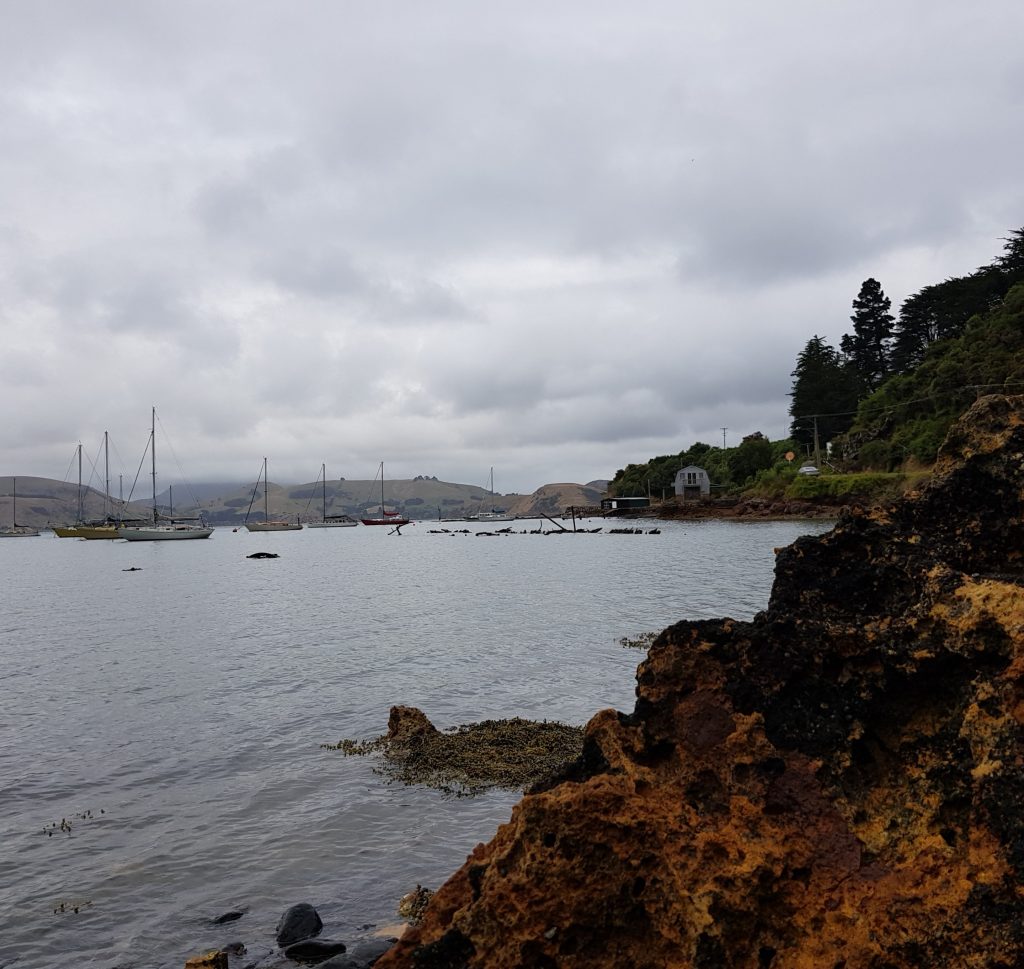
Despite my attempt to schedule our adventure for the lowest tide possible, the remains of the ill-fated vessel were still well out in the water. Our only option was to wade for it. KL soon chickened out but I wouldn’t be deterred!
This area of the bay was once used for ship breaking, with several ships being disassembled here, though this is the only one to leave a visible mark. Rumours abound about this vessel, stemming from the shackles and Spanish coins that were allegedly found as it was broken down – some of which are now in the Port Chalmers Maritime Museum. The usual explanation, which has been whispered around Dunedin for at least a hundred years, was that the boat must have been a slaver, employed in ferrying its unhappy cargo from Africa to America. However there is no evidence (besides the rumours) that the ship was ever engaged in this trade, so what then should we make of the shackles?

This three-masted ship began its life in in 1857 in Gävle, Sweden, as the Daniel Elfstrand Pehrsson. It was employed in the guano trade, but was sold after reaching the port of Valparaiso in Chile and renamed the Elcira Subercaseaux before disappearing from public record for about seven years. This is the period about which most of the speculation hangs, with rumours of slavery, blockade running and piracy.
However, I have managed to pinpoint a Chilean ship with the same name visiting the San Francisco port in both 1862 and 1863. In 1862 she brought cognac and soap from Bordeaux in France, while in 1863 she was headed for Valparaiso carrying molasses, quicksilver, silk and tea totalling $22,722 in value. That’s…a lot more boring than I’d been lead to believe. The shadiest thing about it was the notice in the paper saying the captain and owners would not be responsible for any debts incurred by the crew.

Well, never mind that. In 1868 the ship re-emerged in Valparaiso under a different name – Don Juan. She changed hands and was renamed again to the Rosalia and proceeded to transport “coolies” – Chinese labourers – from China to Peruvian plantations. While not technically slavery, it wasn’t necessarily the most ethical trade, and that goes some way to explaining the shackles. Mistreated coolies had been known to mutiny, hence defensive measures such as a heavily armed crew and a solid wooden barrier to keep the human cargo at bay.
In 1874 her coolie-carrying days were over, and she was bought by Walter Guthrie (of Guthrie and Larnach fame). By the time she reached Napier from Puget Sound, the crew had had enough of her constant leaking and refused to go any further. However the court found that the ship was sound and ten members of the unhappy crew were sentenced to hard labour. With replacement crew aboard, she sailed for Dunedin, her last voyage as she was condemned as a “coffin ship” upon arrival and forbidden to sail despite a sneaky name change back to Don Juan. No word on whether the now-vindicated crew members received any compensation.
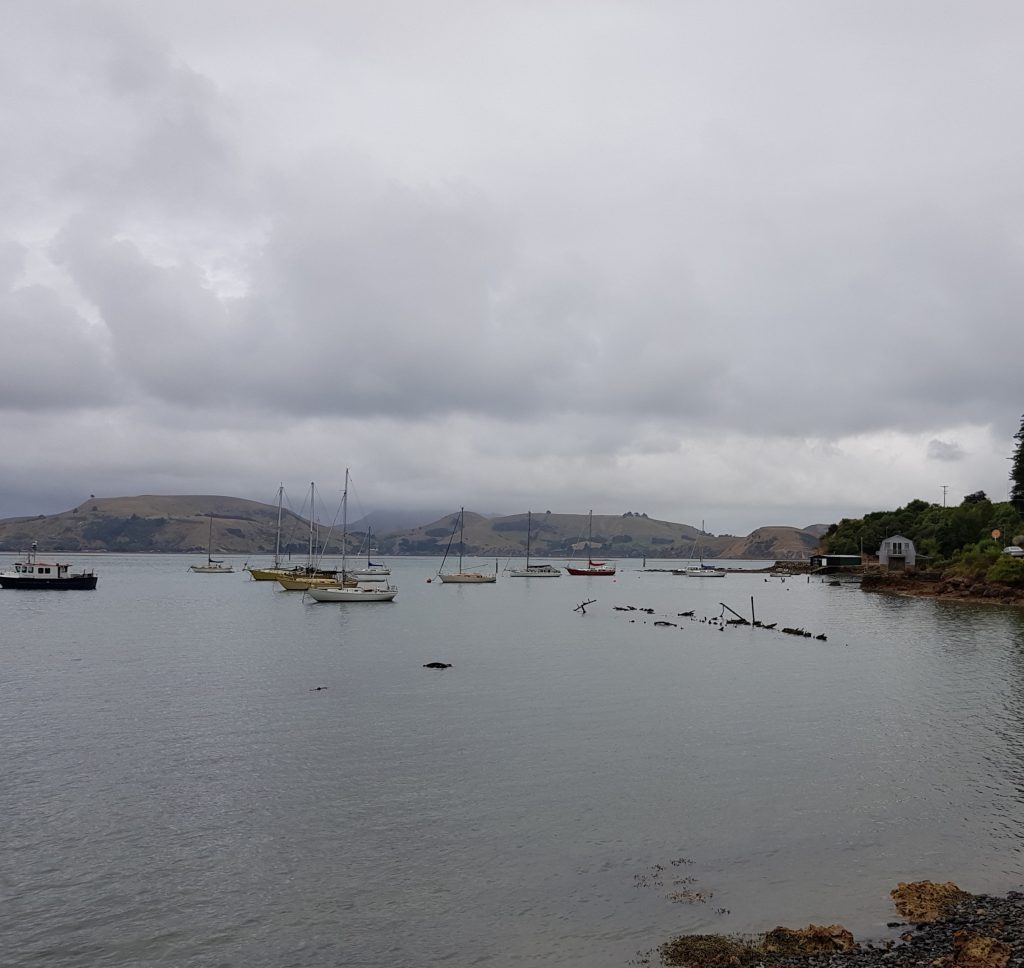
She was acquired by the Union Steamship Company and used as a floating workshop for a while, before they generously donated the hulk to the Patriotic Committee to be towed to Mussel Bay and burned as a massive spectacle, however the bay was too shallow and the ship was returned. So instead of going out in a spectacular style, the grand old hulk was sold to E. Nelson of Deborah Bay for breaking up, and here she has mouldered ever since.
Thus ended our exploration of Deborah Bay’s surprising past – the brave torpedo men, the ill-fated explosive factory, the not-so-pirate ship. Today the boats bob gently on the calm water and the misty rain dampens the sounds of civilisation, our only companions the birds.
References:
Deborah Bay : the people and events of a Lower Otago Harbour community by Norman Ledgerwood
A NEW INDUSTRY Otago Daily Times, Volume 13004, Issue 13004, 20 June 1904
TAIPO EXPLOSIVE SYNDICATE. Otago Daily Times, Issue 13100, 10 October 1904, Supplement
Finance Stocks and Mining New Zealand Free Lance, Volume VI, Issue 312, 23 June 1906
Colourful past of Otago’s ‘pirate ship’ by Chris Morris
Movements of the Elcira Subercaseaux sourced from:
California Digital Newspaper Collection, Center for Bibliographic Studies and Research, University of California, Riverside, <http://cdnc.ucr.edu>

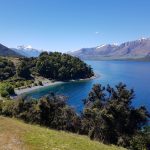
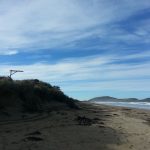
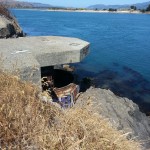
Thoroughly enjoyable – thank you!
You may wish to have a wee look at this site
https://www.facebook.com/groups/513374362051133/
regards
Thanks, I’ve now joined!
https://www.facebook.com/groups/513374362051133/
Very interesting indeed. Keep up the good work.
An interesting report. Thanks.
Very detailed expedition with photos, thanks, as if I were with you. I like to follow your creative ideas in blogging. If you are looking for high-quality text on any topic, we https://philosophyessays.net will help you at any time of the day quickly and efficiently.
Hi Just read this post -very interesting. I realise that some time has past but just thought worth a try. It was my Grandfather Robert Johnston who died as a result of the Taipo works explosion and I am interested in any aditional info I can find on that event or anything concerning Robert. I do know his father was a farm worker at Goodwood so presume Robert was born there. I believe he was a Marine Engineer so probably trained at woks at Port Chalmers so will try to follow that up. Not sure if Stevenson and Cook was in action at that time or not.
tanks
all
Raynor Johnston
Hamilton
I found your very interesting history of Deborah Bay while searching on-line for information about that area. The SS Deborah was built by my Great Grandfather George Washington Raymond in Kouchibouquac Canada. It was named after both his young daughter and his wife Deborah Lewis. His daughter Deborah christened the ship at the launching. As was the custom it was filled with lumber and crossed the Atlantic under the command of Joseph Cunard and sold in England. Later it brought a load of prisoners to Australia and eventually ended up in New Zealand. The Deborah was sent south on an exploratory mission and landed in what is now Deborah Bay. It was later lost in a storm in the South Pacific. In 2 days my eldest daughter Deborah Anne will celebrate her 61st birthday. I see that Carey Bay is just up-stream from Deborah Bay. I very much doubt sure there is a connection. With best regards from Eastern Canada.